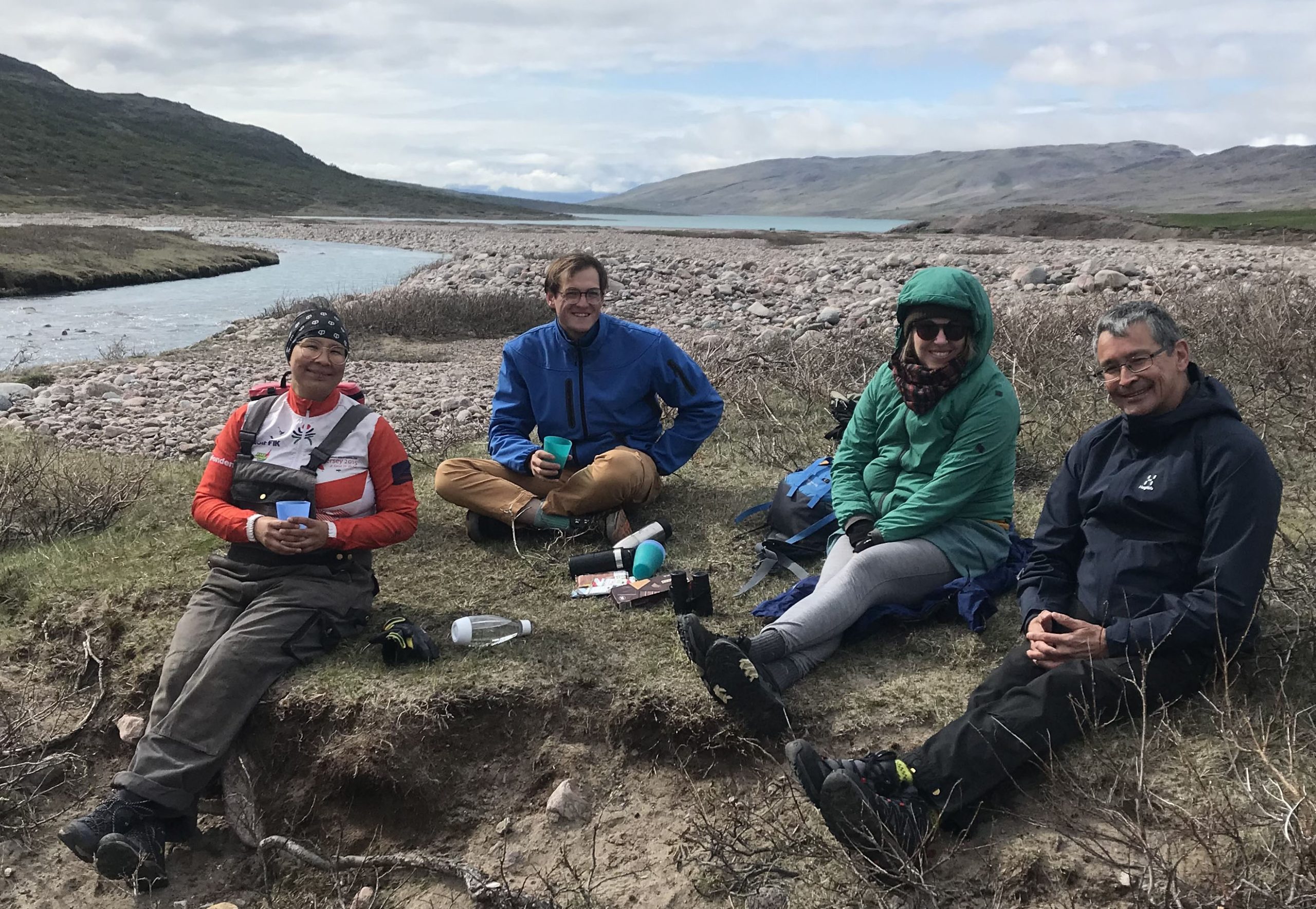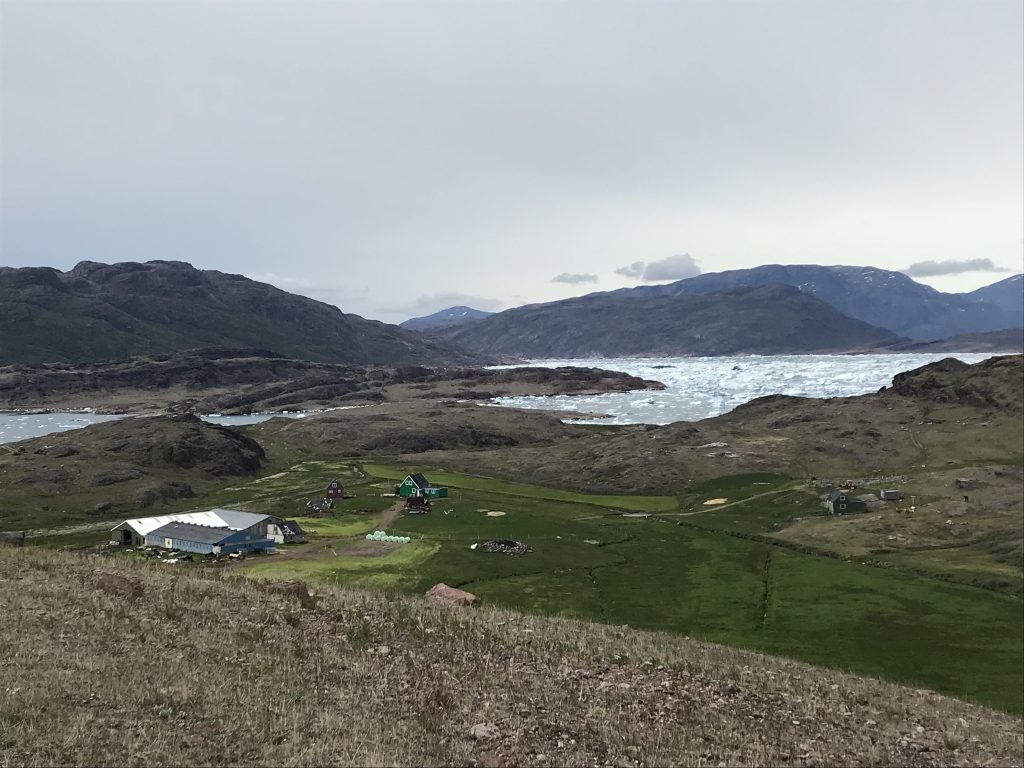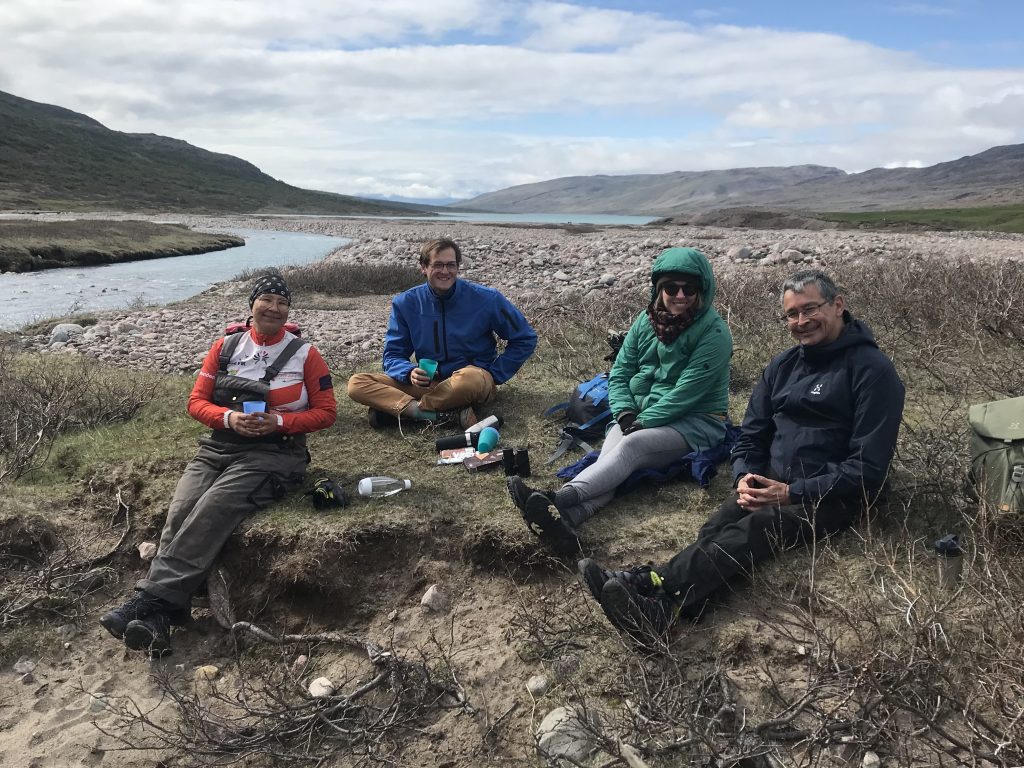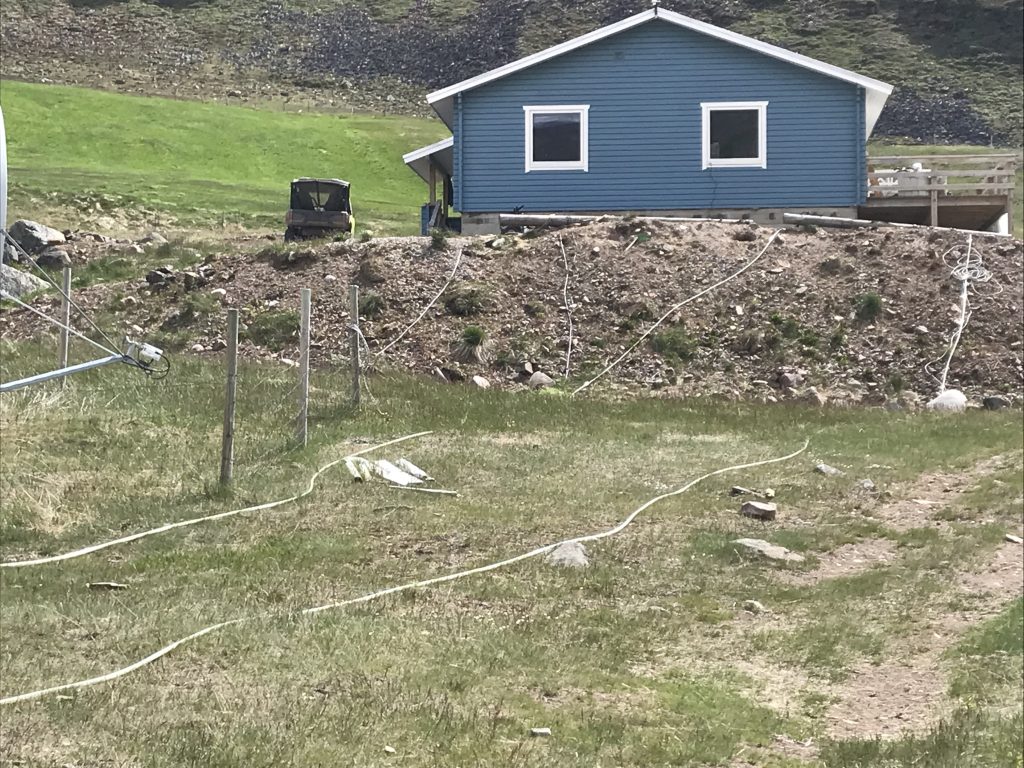
Impacts of Changing Arctic Freshwater Resources on South Greenland Farm Water Use and Irrigation Systems
Expedition Location: Qassiarsuk, Greenland
Expedition Dates: June 16th 2024 – July 3rd 2024
Field Team Members: Kiley Daley (Postdoctoral Research Associate, UMaine), Erik Kielsen (Independent Researcher, Greenland), Amanda Gavin (PhD Student, UMaine), Thomas Grindle (PhD Student, UMaine)
Funding Support: UMaine Flagship Postdoctoral Fellowship and the National Science Foundation Systems Approaches to Understanding and Navigating the New Arctic Research Traineeship Program (SAUNNA NRT)
Background & Study Area:
South Greenland is the first known example of agriculture in the Arctic. In this region, Norse and Inuit subsistence practices merged to create a distinctive cultural landscape that is highly vulnerable to environmental change (Vésteinsson et al. 2016). Today, there are approximately 40 family farms (Figure 1), with most focused on raising sheep and grass production for fodder (Statistics Greenland 2024). A key priority for farmers striving to maintain or grow their operations is a more reliable domestic grass crop to reduce reliance on imported feed (Bojesen & Olsen 2019; Caviziel et al. 2017).

A changing precipitation pattern in recent years has created a twofold challenge for sheep farms in South Greenland (Caviezel et al. 2017; Walsh et al. 2022). During the same season, farmers must be prepared to deal with too little water (dry seasons or drought) but also too much water (extreme precipitation events). To prepare for this interannual variability, irrigation systems that draw from freshwater lakes and ponds have been installed on some farms and are in various stages of planning on others. These systems vary greatly in type, technical sophistication, and effectiveness.
The objectives of this project are 1) to estimate current-on farm freshwater use and challenges; and 2) to support sheep farmers’ water management efforts.
Methods:
In 2024, three farm assessments were conducted in Qassiarsuk and the surrounding area. Two occurred on active farms and a third preliminary assessment was conducted at a site where several farms are currently inactive, partially due to freshwater constraints (Figure 2 shows a map of farm site assessment locations conducted during the 2023 and 2024 field seasons). During each assessment, data was collected using ‘walk-along’ semi-structured interviews, investigations of on-farm water systems, and participatory mapping of freshwater sources (Figures 3 and 4).



Additionally, this project intersects with research being conducted in the same region by Amanda Gavin (Quantifying Lake Metabolism and Carbon Burial in an Agricultural, Drought-prone Sub-Arctic Landscape). While the two projects are distinct, valuable contextual information pertaining to the surrounding freshwater resources was gained through cooperative fieldwork activities.
This project also incorporates associated engagement activities between South Greenland community partners and the SAUNNA NRT. During the 2024 field season, these included sharing newsletters and research summaries from previous field seasons with participating farms, drinking water sampling and testing for heavy metals and other potential contaminants as requested by community members, and attending Greenland National Day (June 21 2024) festivities.
Preliminary Results:
Analysis of the farm site assessment data is ongoing using a seasonal calendar methodology. Seasonal calendars bring together ecological, climatic, and hydrological observations (Chambers et al. 2021; Kassam et al. 2018). They are a means of documenting knowledge Indigenous peoples have of their environment and provide frameworks to support natural resource management (CSIRO 2024).
Preliminary themes that have emerged include:
- Each farm relies on a unique water system comprised of numerous decentralized subcomponents (e.g., potable water for the house may be drawn from a spring while field irrigation water is piped from a nearby surface source).
- Water needs fluctuate significantly throughout the year depending on season, recent weather patterns, and cycle of farm activities. In some cases, water must be temporarily diverted from home use and fully directed to farm infrastructure (Figure 5).
- The availability of water is the foremost consideration to any siting, change, or expansion to farm operations.
The next stage of analyses involves further development of a seasonal calendar that includes farm activities, annual phenological events, and estimated freshwater demand.

Acknowledgements:
This expedition report is specific to the 2024 field season. However, this project has been developing for several years as our team builds research relationships with the South Greenland farming community. As such, I would like to acknowledge the contributions of the entire SAUNNA NRT as well as the following faculty and students who have directly contributed during past field seasons (all UMaine affiliated unless otherwise noted): Jasmine Saros, Robert Northington (Elizabethtown College), Amanda Gavin, Vendy Hazuková, Vinton Valentine (University of Southern Maine), Serena Laro, and Brooke Camire. Additionally, I gratefully acknowledge the work of my local research collaborator during the 2023 field season, Aqqaluaq Frederiksen. And finally, utmost thanks to the farmers who have participated in this project.
References:
Bojesen, M. H., & Olsen, A. (2019). Agriculture in Greenland–Possibilities and needs for future development and research. Synthesis Report for Greenland Agricultural Initiative (GRAIN) in cooperation with Greenland Perspective. Available at: https://natur.gl/year-en-2/2020-en/synthesis-report-on-agriculture-in-greenland-has-beenpublished/?lang=en
Caviezel, C., Hunziker, M., & Kuhn, N. J. (2017). Bequest of the Norseman—The potential for agricultural intensification and expansion in southern Greenland under climate change. Land, 6(4), 87.
Commonwealth Scientific and Industrial Research Organization (CSIRO). (2024). Indigenous seasonal calendars. Available at: https://www.csiro.au/en/research/indigenous-science/Indigenous-knowledge/Calendars
Chambers, L.E., Plotz, R.D., Lui, S., Aiono, F., Tofaeono, T., Hiriasia, D., Tahani, L., Fa’ananu, O., Finaulahi, S. & Willy, A. (2021). Seasonal calendars enhance climate communication in the Pacific. Weather, Climate, and Society, 13(1), 159-172.
Kassam, K.A.S., Ruelle, M.L., Samimi, C., Trabucco, A., & Xu, J. (2018). Anticipating climatic variability: The potential for ecological calendars. Human Ecology, 46, 249–257.
Statistics Greenland (2024). Greenland in Figures 2024. Nuuk, Greenland. Available at: www.stat.gl.
Vésteinsson, O., C. Andreasen, I. Bisgaard, K. Høegh, B. L. Kristoffersen, A. Jochimsen, P. Ledger, P. Lynge, C. K. Madsen, M. Myrup, G. Nyegaard, & H. Sørensen. (2016). Kujataa – a subarctic farming landscape in Greenland – A nomination to UNESCO’s World Heritage List.
Walsh, J.E., Bigalke, S., McAfee, S.A., Lader, R., Serreze, M.C. & Ballinger, T.J. (2022). Precipitation. Arctic Report Card 2022, M.L. Druckenmiller, R.L. Thoman, and T.A. Moon, Eds.

